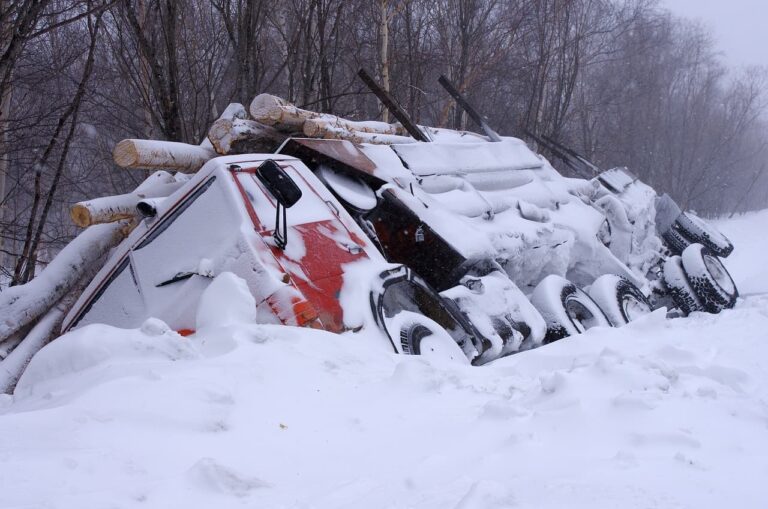Truck accidents in Bakersfield, California, aren’t uncommon and can have severe consequences, causing injuries and even fatalities. As experts focus on improving safety measures in the city, one crucial aspect that deserves attention is the implementation of underride guards. Underride guards are safety devices attached to the back and sides of trucks aiming to prevent vehicles from sliding underneath in case of a collision.
Truck Accidents: A Concerning Problem
Every year, numerous accidents involving trucks take place on our city’s roads. The significant difference in size and weight between trucks and passenger vehicles often leads to devastating outcomes for those involved in collisions with these large vehicles. This is where a Bakersfield truck accident lawyer can help.
Underride Injuries: Severity And Impact
Underride crashes during truck accidents can result in severe consequences. When a vehicle slides beneath the trailer or side of a truck, it inflicts damage on the occupants of the vehicle. Common injuries from accidents include head trauma, amputations, spinal cord injuries, and even decapitation.
Understanding Underride Guards
Underride guards play a key role as safety devices designed to minimize the risk of collisions. These metallic barriers create a separation between vehicles and the exposed undercarriage of commercial trucks.
Types Of Underride Guards
Two primary types of underride guards exist:
1. Rear Underride Guards:
Rear underrides occur when a smaller vehicle crashes into the back of a truck. Rear guards are bars positioned vertically at the rear edge of trailers. These guards help decrease the seriousness and risk of injuries in rear-end collisions by preventing a car from ramming into another from the back.
2. Side Underride Guards:
Side underrides happen when a smaller vehicle collides with the side panels or wheels of a truck. Side guards are attachments connected to trailers that prevent cars from sliding beneath them during accidents. They assist in absorbing impact forces and maintaining separation between cars and the exposed undercarriage of trucks.
Underride Guards: The Safety Advantage
The goal of underride guards is to safeguard vulnerable road users by reducing the chances and severity of underride accidents. When implemented correctly, these guards offer safety benefits:
1. Reduces Injuries: Underride guards act as a barrier, minimizing the risk of injuries and fatalities in truck-related accidents. By preventing occupants from slipping beneath the trailer or side, these guards reduce life-threatening head and neck injuries.
2. Enhances Visibility: Underride guards make commercial vehicles more visible during adverse weather conditions. Enhanced visibility can greatly assist drivers on the road in assessing their distance from the truck and taking appropriate action to prevent accidents.
3. Promoting Safety Standards: Recognizing the significance of implementing underride guards, regulatory bodies such as the National Highway Traffic Safety Administration (NHTSA) and the Insurance Institute for Highway Safety (IIHS) actively collaborate with manufacturers to enhance underride guard design and effectiveness, thus prioritizing safety regulations.
Legislation and Legal Requirements
To ensure road safety, there are regulations mandating the use of underride guards at both state and federal levels. However, specific requirements may vary depending on factors such as location, industry sector, or trailer type.
State Regulations:
Several states have established laws that require side underride guards. It is crucial for fleet managers to stay updated with the regulations in each state where their trucks operate.
Federal Regulations:
The United States Department of Transportation (DOT) mandates the installation of protection systems on motor vehicles. The Federal Motor Carrier Safety Administration (FMCSA) incorporates Truck Maintenance Inspection Requirements that include checks for compliance with underride guard systems. Moreover, FMCSA’s guidelines also outline collision testing standards aimed at enhancing underride guard performance.
Manufacturer Accountability and Legal Responsibility
Truck companies have a role to play in ensuring that underride guards are designed and installed correctly. This is important because it helps minimize the likelihood of accidents while also protecting individuals on the road. In situations where underride guards do not meet the safety standards, manufacturers can be held responsible for any resulting injuries or even fatalities.
Conclusion
Underride accidents continue to be a concern on our roads, often causing injuries and loss of life. It is essential to prioritize the implementation of side underride guards as they greatly contribute to improving road safety by reducing the risks associated with these collisions. By adhering to both state and federal regulations, fleet owners and truck manufacturers can actively contribute to creating safe transportation systems for all individuals using our roads.
